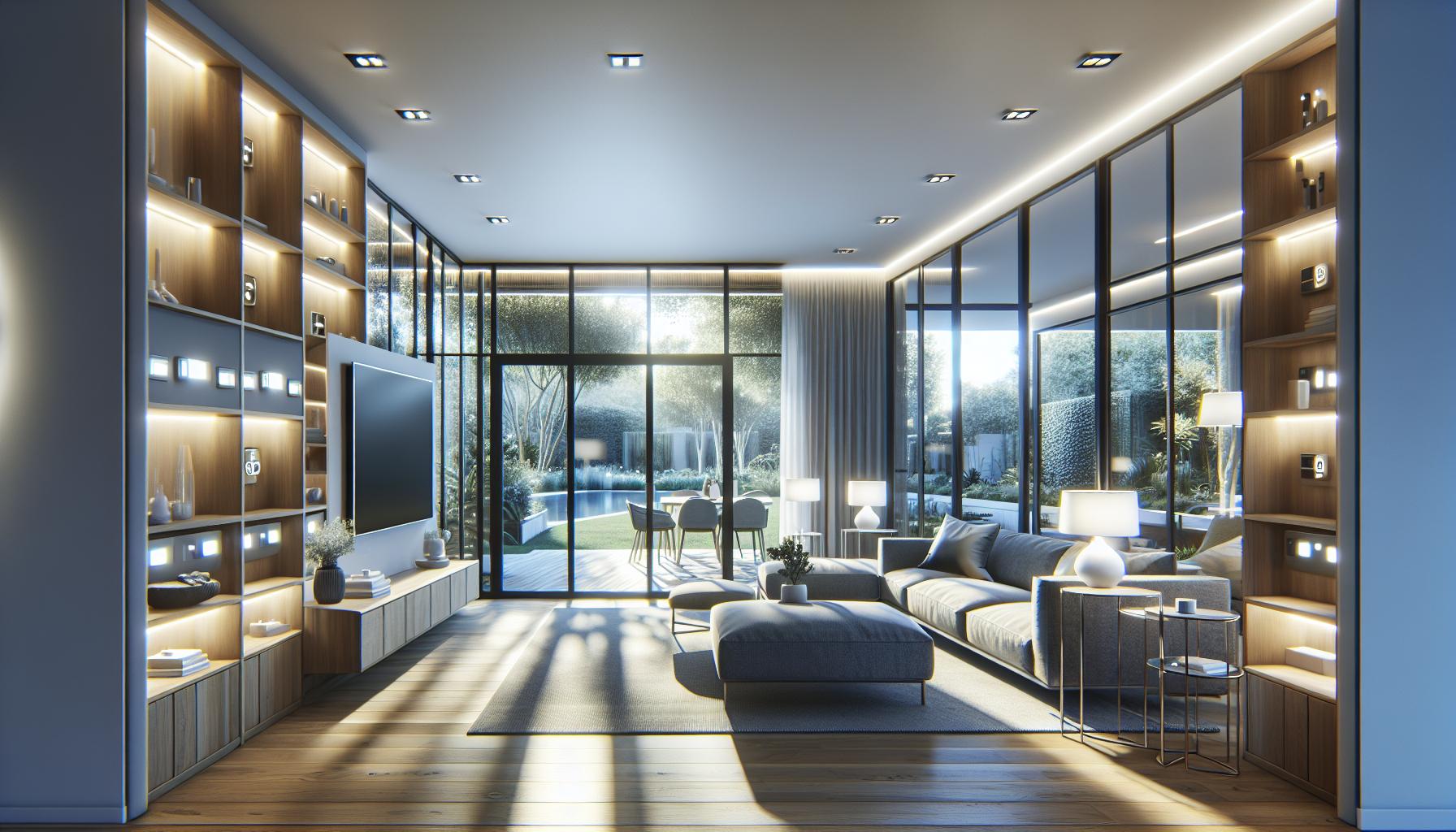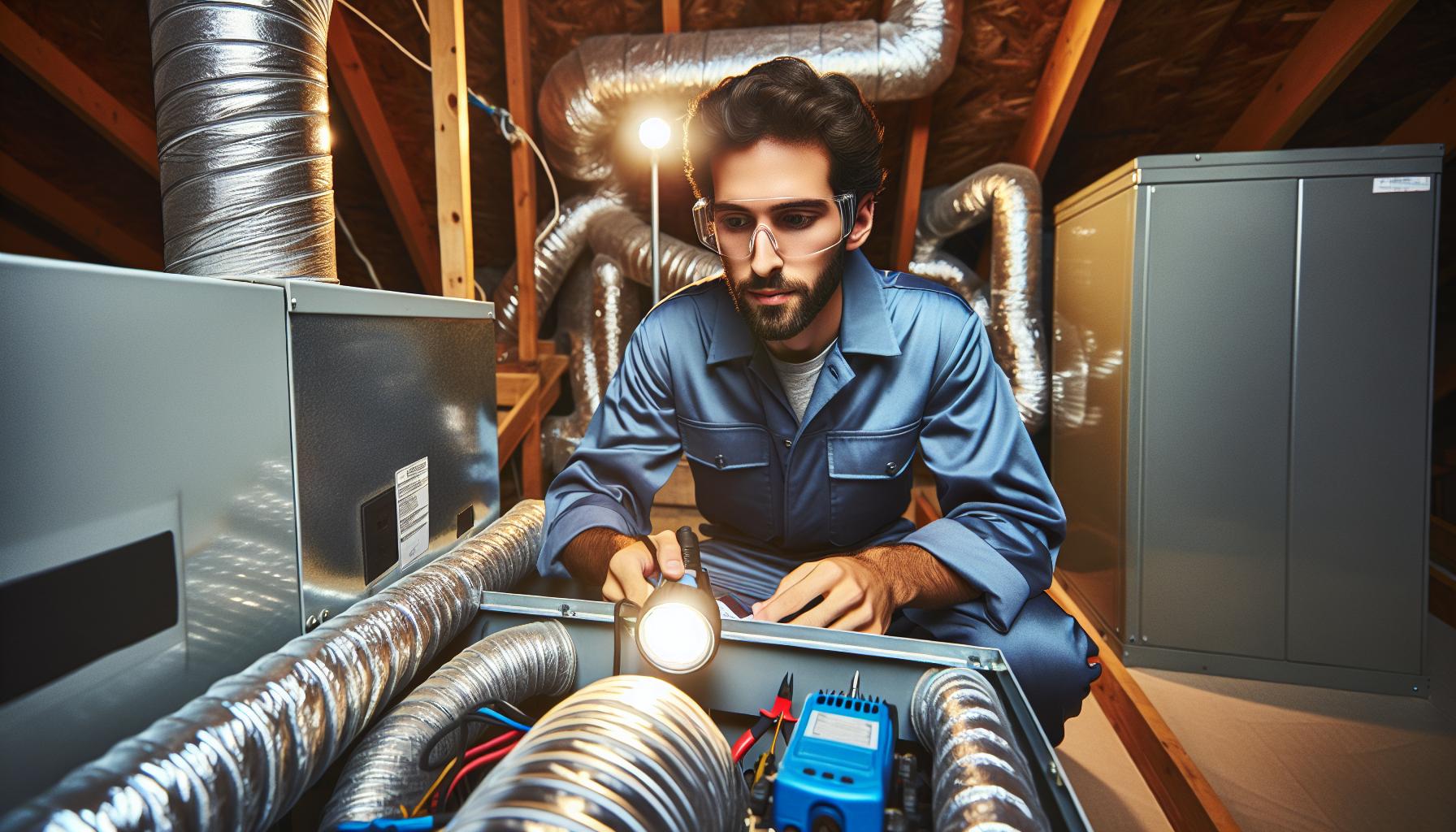I’ve helped hundreds of homeowners slash their energy bills through simple yet effective changes in their homes. As energy costs continue to rise, making your home more energy-efficient isn’t just good for the environment – it’s essential for your wallet too.
When I started my journey toward an energy-efficient home, I discovered that small adjustments could lead to significant savings. From upgrading insulation to installing smart thermostats, there are countless ways to reduce energy consumption without sacrificing comfort. I’ll share proven strategies that have helped my clients save an average of 30% on their monthly utility bills while creating a more sustainable living space.
Key Takeaways
- Proper insulation in walls, attics, and around windows/doors can reduce energy loss by 25-35% and significantly lower utility bills
- Upgrading to LED lighting can cut electricity usage by 75% compared to traditional bulbs while lasting 25 times longer
- Smart thermostats with learning capabilities can reduce heating costs by 10-12% and cooling costs by 15%, saving $130-150 annually
- Energy Star certified appliances exceed federal efficiency standards by 10-15%, with refrigerators alone saving up to 450 kWh annually
- Installing low-flow water fixtures can save thousands of gallons annually while reducing water heating energy costs by 30%
- Regular HVAC maintenance, including filter changes and professional tune-ups, can improve system efficiency by 15% and extend equipment lifespan by 5-10 years
Understanding Home Energy Efficiency
Home energy efficiency involves minimizing energy waste while maintaining comfort through strategic improvements and conscious usage. My experience shows that understanding the core principles of energy efficiency enables homeowners to make informed decisions about upgrades and modifications.
Common Energy Loss Areas
Energy loss typically occurs through specific vulnerable points in a home’s structure:
- Windows account for 25-30% of heating and cooling losses due to drafts or poor insulation
- Doors contribute to 15% of energy waste through gaps and worn weatherstripping
- Attics lose 35% of conditioned air when improperly insulated
- HVAC ducts waste 20-30% of heated or cooled air through leaks or poor connections
- Walls without proper insulation allow 20% of energy to escape
- Basements and crawl spaces leak 15% of energy through unsealed foundations
| Benefit Category | Average Impact |
|---|---|
| Monthly Utility Savings | 20-30% reduction |
| Home Value Increase | 5-10% premium |
| Carbon Footprint | 2.5 tons CO2 reduction annually |
| Indoor Comfort | 40% fewer temperature fluctuations |
- Lower utility bills through reduced energy consumption and waste
- Enhanced indoor comfort with consistent temperatures across rooms
- Improved air quality from better ventilation and filtration systems
- Increased property value through documented efficiency improvements
- Reduced carbon emissions from decreased energy usage
- Extended lifespan of HVAC equipment due to optimized operation
Smart Upgrades for Better Insulation

I’ve identified insulation upgrades as key components in maximizing home energy efficiency. Based on my experience working with numerous homeowners, strategic insulation improvements reduce energy loss by 25-35% while creating a more comfortable living environment.
Weather Stripping and Sealing
Weather stripping creates an effective barrier against air leaks around windows doors. I recommend installing high-quality foam tape or vinyl strips around door frames side rails window sashes to prevent drafts. My clients report a 10-15% reduction in heating cooling costs after implementing these weather sealing solutions:
- Silicone caulk for gaps between walls windows
- Door sweeps for spaces under exterior doors
- Expandable foam for larger openings around pipes vents
- V-strip weather stripping for double-hung window channels
Proper Wall and Attic Insulation
Attic wall insulation serves as the primary defense against heat transfer energy loss. I’ve found that upgrading insulation materials achieving proper R-values leads to 20-30% energy savings:
| Insulation Location | Recommended R-Value | Energy Savings |
|---|---|---|
| Attic | R-49 to R-60 | 15-25% |
| Exterior Walls | R-13 to R-21 | 10-20% |
| Floors | R-25 to R-30 | 8-15% |
- Blown-in cellulose for existing walls
- Fiberglass batts for unfinished attic floors
- Spray foam for rim joists crawl spaces
- Reflective barriers for attic rafters
Energy-Efficient Lighting Solutions

I’ve discovered that lighting accounts for 15% of a home’s electricity usage. Through my experience helping homeowners upgrade their lighting systems, I’ve documented significant energy savings with modern solutions.
LED Bulb Benefits
LED bulbs transform 95% of energy into light, unlike traditional incandescent bulbs that waste 90% as heat. Here’s what I’ve observed with LED installations:
- Consume 75% less energy than incandescent bulbs
- Last 25 times longer, with an average lifespan of 25,000 hours
- Generate minimal heat, reducing cooling costs
- Provide instant illumination without warm-up periods
- Contain no mercury or harmful chemicals
| LED vs Traditional Lighting | LED Bulbs | Incandescent Bulbs |
|---|---|---|
| Energy Usage (60W equivalent) | 8-12W | 60W |
| Annual Operating Cost | $1.50 | $7.50 |
| Average Lifespan | 25,000 hours | 1,000 hours |
| Heat Production | 3.4 BTU/hour | 85 BTU/hour |
- Motion sensors that automatically turn off lights in empty rooms
- Daylight harvesting systems that adjust brightness based on natural light
- Scheduling features that optimize lighting patterns for different times
- Mobile app controls for remote management
- Zone-based lighting that allows for customized room settings
| Smart Lighting Savings | Percentage |
|---|---|
| Motion Sensors | 30-50% |
| Daylight Harvesting | 20-40% |
| Scheduling Features | 15-25% |
| Zone Controls | 10-20% |
Optimizing HVAC Systems

HVAC systems consume 40% of a home’s total energy usage. I’ve identified specific maintenance practices and smart technology upgrades that reduce HVAC energy consumption by 15-30%.In colder climates, radiant heat flooring panels can be a practical and energy-efficient alternative to traditional heating systems, helping maintain consistent warmth while lowering utility costs.
Regular Maintenance Tips
Regular HVAC maintenance extends system lifespan by 5-10 years while reducing energy costs by 15%. Here’s my proven maintenance checklist:
- Replace air filters every 60-90 days to maintain airflow efficiency
- Clean air ducts every 3-5 years to remove debris buildup
- Check refrigerant levels annually to ensure optimal cooling performance
- Inspect ductwork for leaks that waste 20-30% of conditioned air
- Clean outdoor condenser units monthly to remove dirt and debris
- Schedule professional tune-ups twice yearly (spring and fall)
| Maintenance Task | Frequency | Energy Savings |
|---|---|---|
| Filter Change | 60-90 days | 5-15% |
| Duct Cleaning | 3-5 years | 10-20% |
| Professional Tune-up | Bi-annual | 10-15% |
- Learning capabilities that adapt to occupancy patterns
- Remote temperature control via smartphone apps
- Multi-zone programming for different areas
- Energy usage reports with cost-saving recommendations
- Integration with other smart home devices
- Maintenance alerts for filter changes and tune-ups
| Smart Thermostat Benefits | Annual Savings |
|---|---|
| Heating Reduction | 10-12% |
| Cooling Reduction | 15% |
| Total Cost Savings | $130-150 |
Energy-Saving Appliances and Electronics
Energy-efficient appliances reduce electricity consumption by 10-50% compared to standard models while maintaining optimal performance. I’ve helped numerous homeowners select energy-saving devices that match their needs through careful evaluation of power usage patterns.
Energy Star Ratings
Energy Star certified appliances exceed federal efficiency standards by 10-15%. These ratings indicate annual energy consumption data measured in kilowatt-hours (kWh) alongside estimated operating costs.
| Appliance Type | Annual Energy Savings | Cost Savings |
|---|---|---|
| Refrigerator | 450 kWh | $65 |
| Washing Machine | 280 kWh | $40 |
| Dishwasher | 160 kWh | $25 |
| Air Conditioner | 500 kWh | $70 |
Key features of Energy Star products:
- Advanced power management systems that reduce standby consumption
- Improved insulation materials in refrigerators freezers
- High-efficiency motors in washing machines dryers
- Precision sensors that optimize water heating cycles
- Smart diagnostic capabilities for performance monitoring
Power Management Strategies
Advanced power management techniques reduce phantom energy loss by 5-10%.
Essential power-saving practices:
- Connect devices to smart power strips that eliminate standby power drain
- Enable sleep mode settings on computers monitors
- Unplug chargers battery packs when not in active use
- Schedule automated shutdowns for office equipment
- Use timers for entertainment systems gaming consoles
Smart power management tools:
- Energy monitoring displays tracking real-time consumption
- Automated power scheduling systems
- Remote control apps for device management
- Load-sensing power strips
- Voice-activated smart plugs
| Device State | Annual Energy Use | Cost Impact |
|---|---|---|
| Active Mode | 850 kWh | $120 |
| Sleep Mode | 350 kWh | $50 |
| Standby Mode | 200 kWh | $30 |
| Smart Management | 150 kWh | $20 |
Water Conservation Methods
Water conservation directly impacts energy efficiency by reducing the energy required for heating, pumping, and treating water. Through my experience helping homeowners optimize their water usage, I’ve documented average household savings of 30% on water-heating costs through strategic improvements.
Low-Flow Fixtures
Low-flow fixtures reduce water consumption while maintaining performance. I recommend installing:
- WaterSense-labeled showerheads using 2.0 gallons per minute vs standard 2.5 GPM
- Faucet aerators limiting flow to 1.5 GPM for bathrooms and 2.2 GPM for kitchens
- Dual-flush toilets consuming 1.28 gallons per flush compared to older 3.5 GPF models
- Smart leak detectors identifying hidden water waste points
| Fixture Type | Standard Usage | Low-Flow Usage | Annual Savings |
|---|---|---|---|
| Showerhead | 2.5 GPM | 2.0 GPM | 2,900 gallons |
| Bathroom Faucet | 2.2 GPM | 1.5 GPM | 1,700 gallons |
| Kitchen Faucet | 2.5 GPM | 2.2 GPM | 1,200 gallons |
| Toilet | 3.5 GPF | 1.28 GPF | 13,000 gallons |
- Setting water heater temperature to 120°F reduces energy use by 4-22%
- Installing tank insulation blankets cuts heat loss by 25-45%
- Using pipe insulation prevents 2-4°F temperature drop
- Implementing tankless water heaters operating at 98% efficiency
- Adding timer controls scheduling hot water availability during peak usage
| Solution | Energy Reduction | Cost Savings |
|---|---|---|
| Temperature Setting | 4-22% | $30-60/year |
| Tank Insulation | 25-45% | $20-45/year |
| Pipe Insulation | 3-5% | $10-15/year |
| Tankless System | 25-35% | $100-200/year |
| Timer Controls | 5-12% | $25-40/year |
Conclusion
I’ve seen firsthand how making energy-efficient improvements can transform homes and lives. The combined benefits of reduced utility bills enhanced comfort and environmental impact make these changes worthwhile investments for any homeowner.
Starting with small steps like LED lighting and progressing to larger projects such as insulation upgrades will set you on the path to a more sustainable and cost-effective home. I encourage you to begin implementing these energy-saving strategies today. Your wallet and the planet will thank you.
Remember that every improvement counts and the sooner you start the more you’ll save. I’m confident that by following these recommendations you’ll join my many clients who’ve achieved significant energy savings while creating a more comfortable living space.

